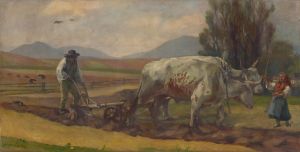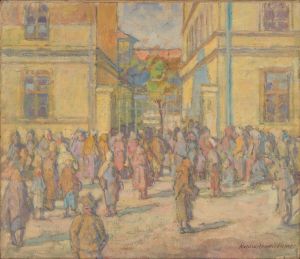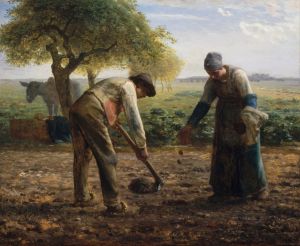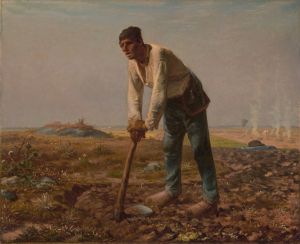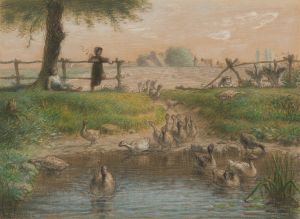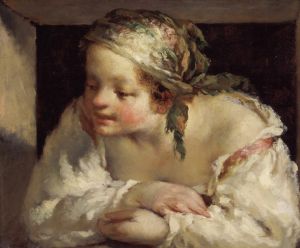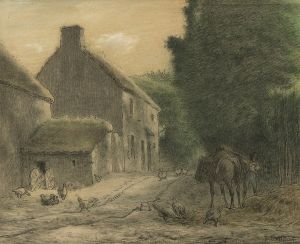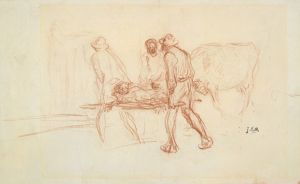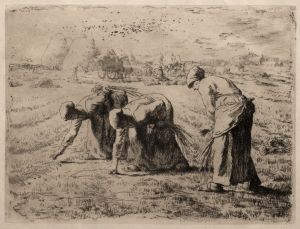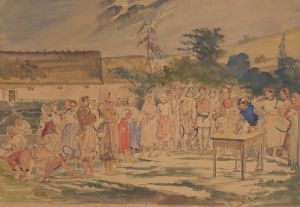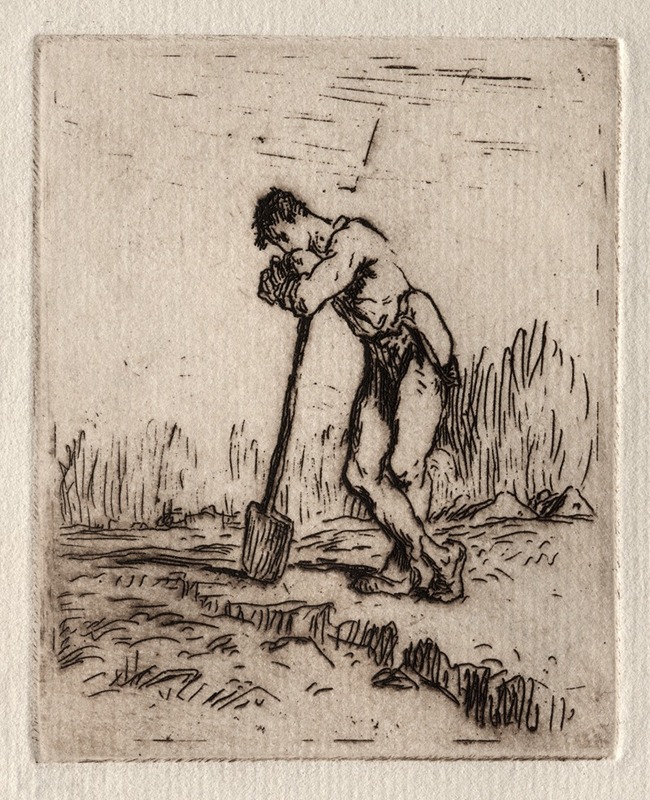
Man Leaning on a Spade
A hand-painted replica of Jean-François Millet’s masterpiece Man Leaning on a Spade, meticulously crafted by professional artists to capture the true essence of the original. Each piece is created with museum-quality canvas and rare mineral pigments, carefully painted by experienced artists with delicate brushstrokes and rich, layered colors to perfectly recreate the texture of the original artwork. Unlike machine-printed reproductions, this hand-painted version brings the painting to life, infused with the artist’s emotions and skill in every stroke. Whether for personal collection or home decoration, it instantly elevates the artistic atmosphere of any space.
Jean-François Millet was a prominent French painter and one of the founders of the Barbizon School, a movement that emerged in the mid-19th century. He is best known for his depictions of peasant life and rural scenes, which often convey a sense of dignity and solemnity. One of his works, "Man Leaning on a Spade," exemplifies his focus on the everyday lives of rural laborers.
"Man Leaning on a Spade" is a painting that captures a moment of rest for a laborer in the fields. The subject of the painting is a solitary male figure, depicted in a moment of pause from his work. He is shown leaning on a spade, a tool emblematic of agricultural labor. The composition is simple yet powerful, emphasizing the physicality and endurance required in rural life. Millet's use of earthy tones and naturalistic detail highlights the connection between the peasant and the land.
The painting reflects Millet's broader artistic concerns and his commitment to portraying the realities of rural existence. During the 19th century, France was undergoing significant social and economic changes, with industrialization and urbanization altering traditional ways of life. Millet's work often served as a counterpoint to these changes, focusing instead on the timeless and enduring aspects of rural labor. His paintings are noted for their empathy and respect for the subjects, presenting them with a sense of nobility and resilience.
Millet's approach to painting was influenced by his own background. Born in 1814 in the village of Gruchy, in Normandy, he was the son of a farmer. This upbringing provided him with firsthand experience of the rural lifestyle he would later depict in his art. After studying in Cherbourg and Paris, Millet moved to the village of Barbizon, near the Forest of Fontainebleau, where he became associated with the Barbizon School. This group of artists sought to break away from the formalism of academic art and instead focused on painting landscapes and scenes of rural life directly from nature.
"Man Leaning on a Spade" is consistent with Millet's thematic focus on the dignity of labor. His works often include solitary figures engaged in agricultural tasks, such as sowing, harvesting, or resting, as seen in this painting. The figure's posture and expression suggest a moment of contemplation or fatigue, inviting viewers to consider the physical demands and quiet perseverance inherent in such work.
Millet's paintings, including "Man Leaning on a Spade," have had a lasting impact on the art world. His focus on the lives of ordinary people and his naturalistic style influenced later artists, including Vincent van Gogh, who admired Millet's ability to convey the spiritual and emotional depth of everyday subjects. Millet's work also contributed to the development of Realism in art, a movement that sought to depict subjects truthfully and without idealization.
In summary, "Man Leaning on a Spade" by Jean-François Millet is a poignant representation of rural life, capturing the essence of a laborer's existence with empathy and respect. Through his art, Millet provided a window into the world of the 19th-century peasant, highlighting the dignity and endurance of those who worked the land. His legacy continues to resonate, offering insight into the human condition and the timeless relationship between people and their environment.







